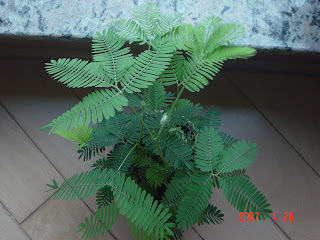
Today I made a grasshopper cage using ice lolly sticks.
There was no need for my family to eat a lot of ice lollies to get the sticks. These sticks were purchased from a stationery shop near my home. The price for one pack of sticks (50 sticks per pack) is HK$2.
I also purchased a pack of rubber bands (costs HK$4) from the shop. I used rubber bands to fix the positions of the sticks.
It is easy to make a grasshopper cage (see previous post for the procedures) and I finished one in 5 minutes' time. I made one for Chiu Yin's use.
Gogo also made one himself. He has written an article on it in Gogo's Blog.
The cage as shown in the photo above is for collecting grasshoppers caught in the field. It is inconvenient to bring along a big cage in an outing. A cage for keeping grasshoppers at home should be larger in size. This kind of cage is expandable. What you need to do is to add more layers of ice lolly sticks to it.
In the old days, we did not have many toys to play with. Children made their own toys from available resources. These toys, like the ice lolly stick grasshopper cage, were creative and interesting. I will try to recreate these toys and post photos of them here in the future.
I believe that the boys will have a wonderful time at the Lung Fu Shan Country Park, each with a grasshopper cage in hand!


















